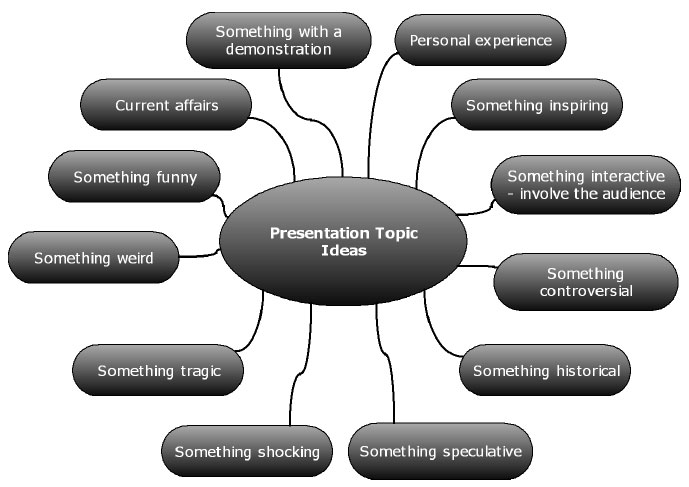Environment for your oral
Knowing the environment you will give your presentation in is important as well. Here are some of the considerations:
How long do you have for your presentation?
Decide whether you will need to and be able to further demonstrate your knowledge of the topic and your communication skills through a question time at the end. Allow time for this.
What type of physical environment is it? A formal talk from behind a podium in a lecture theatre? An informal round table discussion? Or somewhere in between, perhaps from the front of your classroom.
Will you be able to use visual aids, and if so what type? A poster? A blackboard or whiteboard? A projector? A projector showing a Microsoft PowerPoint presentation? Will you have access to audio visual facilities to play back tapes, videos, CDs, or DVDs?
These considerations should influence your topic choice somewhat. For instance, if you don’t have access to any visual equipment, you might find it challenging to do a presentation on a famous artist like Vincent Van Gogh, since he is a famous painter and you can’t show any of his work! If your audience is a group of teenage boys, you’d be ill advised to do a presentation on the quilt patchwork styles of the 19th Century. Rioting during your presentation isn’t generally good for your marks!
If you’re still stuck, here are some ideas to get you thinking:

For persuasive presentations, the biggest topic area to choose from by a mile is ‘current affairs’. You can pick just about anything, just make sure you take into account your audience and presentation environment. Here are some current affairs ideas:
Crime - murder, robbery, fraud, abuse, rape, petty crime, random versus organised crime, passion versus passionless crimes.
Politics - politicians, corruption, government types, coups, major government transitions or revolutions, taxes, pollution, racial groups, leaders, capital punishment, immigration, judicial system.
Social - family structures, marriage and divorce, adoption, abortion, contraception.
Health - fitness, obesity, food, non-Western medicine, fad diets, sport, eating problems, disease, viruses, elicit drugs (cocaine, heroin, marijuana, etc.), alcohol, smoking.
Science and technology - stem cell research, animal testing, ethics, money allocation, corporate funding.
Arts - movies, books, plays, music, painting, sculpture, dance, history and development of art, current place for art in the world, funding of art.
Click here to move on to the next topic: Narrowing down your topic